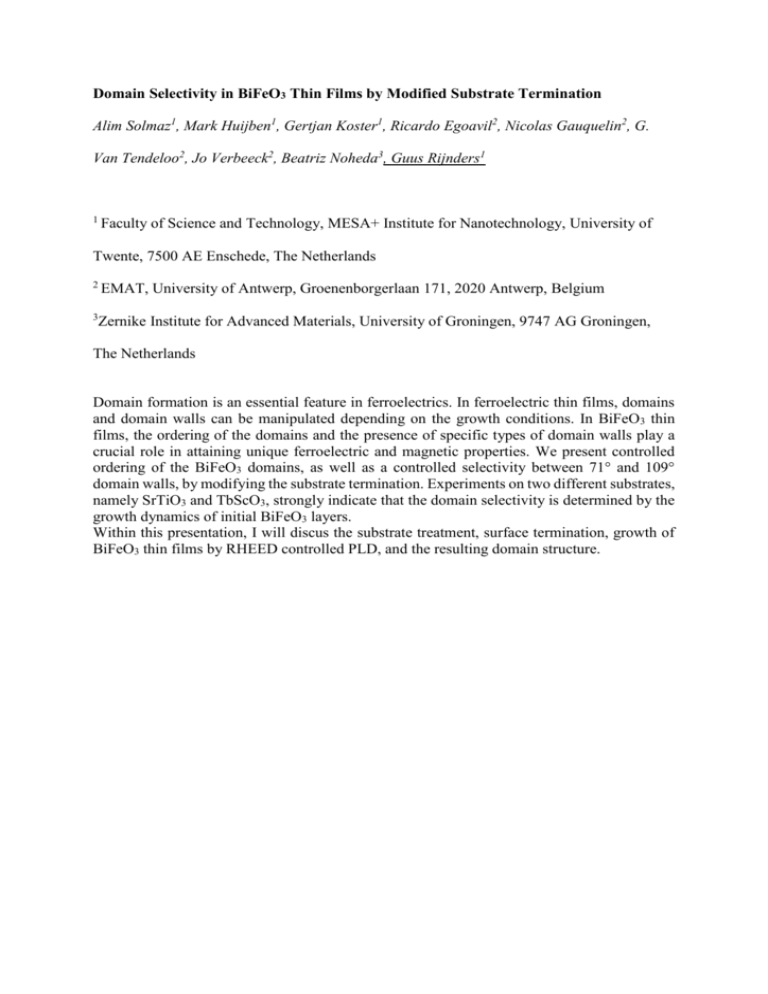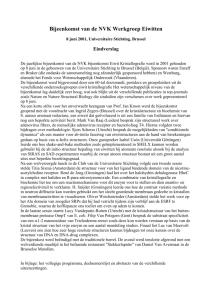Domain Selectivity in BiFeO3 Thin Films by Modified Substrate
advertisement

Domain Selectivity in BiFeO3 Thin Films by Modified Substrate Termination Alim Solmaz1, Mark Huijben1, Gertjan Koster1, Ricardo Egoavil2, Nicolas Gauquelin2, G. Van Tendeloo2, Jo Verbeeck2, Beatriz Noheda3, Guus Rijnders1 1 Faculty of Science and Technology, MESA+ Institute for Nanotechnology, University of Twente, 7500 AE Enschede, The Netherlands 2 EMAT, University of Antwerp, Groenenborgerlaan 171, 2020 Antwerp, Belgium 3 Zernike Institute for Advanced Materials, University of Groningen, 9747 AG Groningen, The Netherlands Domain formation is an essential feature in ferroelectrics. In ferroelectric thin films, domains and domain walls can be manipulated depending on the growth conditions. In BiFeO3 thin films, the ordering of the domains and the presence of specific types of domain walls play a crucial role in attaining unique ferroelectric and magnetic properties. We present controlled ordering of the BiFeO3 domains, as well as a controlled selectivity between 71° and 109° domain walls, by modifying the substrate termination. Experiments on two different substrates, namely SrTiO3 and TbScO3, strongly indicate that the domain selectivity is determined by the growth dynamics of initial BiFeO3 layers. Within this presentation, I will discus the substrate treatment, surface termination, growth of BiFeO3 thin films by RHEED controlled PLD, and the resulting domain structure.
